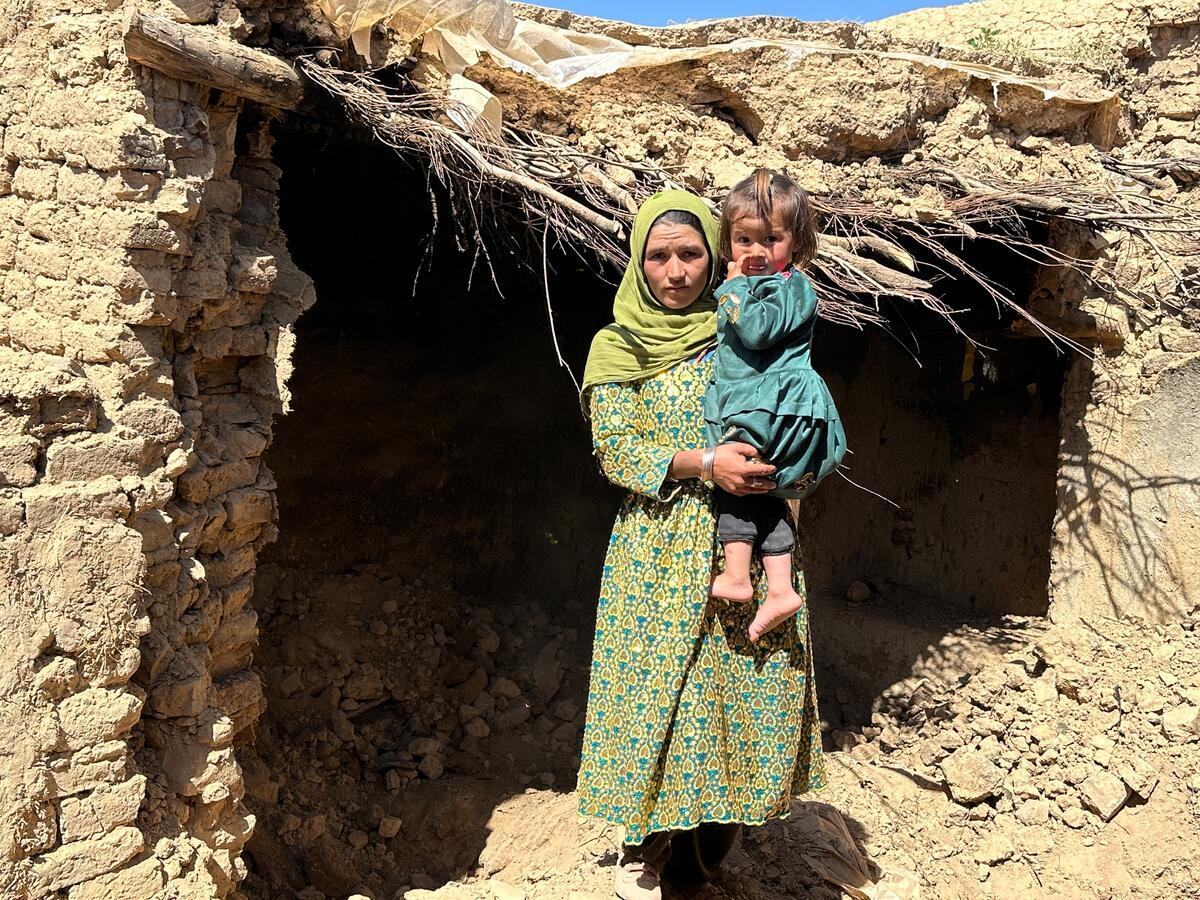UNHCR distributes winter aid for 200,000 Afghans
UNHCR distributes winter aid for 200,000 Afghans

KABUL, Afghanistan, February 19 (UNHCR) - The UN refugee agency is distributing emergency aid to more than 200,000 Afghan returnees, internally displaced and other vulnerable people as part of a coordinated response to the harsh winter that has killed hundreds of people in recent weeks.
UNHCR plans to assist 37,460 Afghan families - numbering more than 200,000 people - with relief items such as tents, blankets, plastic sheets, sleeping mats, lanterns, jerry cans, kitchen sets and soap from the agency's stockpiles throughout the country.
The beneficiaries are a mix of recent returnees from Pakistan and Iran, internally displaced people (IDPs) and others at risk in the particularly cold weather.
The refugee agency's aim is to prevent the most vulnerable families from being forced to leave their homes and thereby adding to the 120,000 people previously displaced by conflict and drought within Afghanistan.
More than 85,000 Afghans have been assisted so far in different regions across the country. The bulk of the agency's contingency supplies have gone to the western region, which has been hardest hit by the severe cold.
Together with its sister agencies, UNHCR has provided 2,500 families with winter supplies in two IDP settlements in the western province of Herat. In addition, 5,030 blankets, 3,230 plastic sheets, 31,000 detergent soap bars, 2,500 metres of hygienic cloth, 930 plastic mats, 510 kerosene heaters and 2,500 jerry cans have been sent to the local Disaster Management Committees in Farah, Ghor, Badghis and Nimrooz provinces.
In the Central Highlands, one of the most severely affected regions, UNHCR has delivered relief items for more than 1,000 people to the Department of Refugees and Repatriation in Daikundi province for further distribution.
In the central region, the refugee agency has provided a combination of cash grants, non-food relief assistance as well as glass window panes (in addition to the regular UNHCR shelter programme) to some 2,000 of the most vulnerable returnees and IDPs in autumn and winter.
The beneficiaries include recently displaced communities in Kabul and Ghazni, recent returnees from camps in Pakistan that were closed, as well as returnees living in land allocation sites. Many of the new returnees are experiencing snow for the first time after nearly 30 years in exile.
Through UNHCR awareness raising and advocacy among agencies and private companies, many more families have received winterization assistance. At the same time, UNHCR is urging donors to direct their assistance to such outlying communities as IDPs in Ghazni and new returnees in Logar, some of whom are still landless and homeless.
In the south this week, the refugee agency delivered winter assistance packages to 780 women living around Kandahar city. Of the planned 5,500 families to be provided with winterization assistance in the southern region, 2,884 families have benefited so far.
In the south-eastern region, 1,500 winterization packages of non-food items were distributed to some 10,000 Afghans living in Paktya and Khost. Similar distributions are underway in Mazar-e-Sharif in the north and Jalalabad in the east as UNHCR continues to work with UN agencies to support the Afghan Disaster Management Committee.
By Mohammad Nadir Farhad in Kabul, Afghanistan









